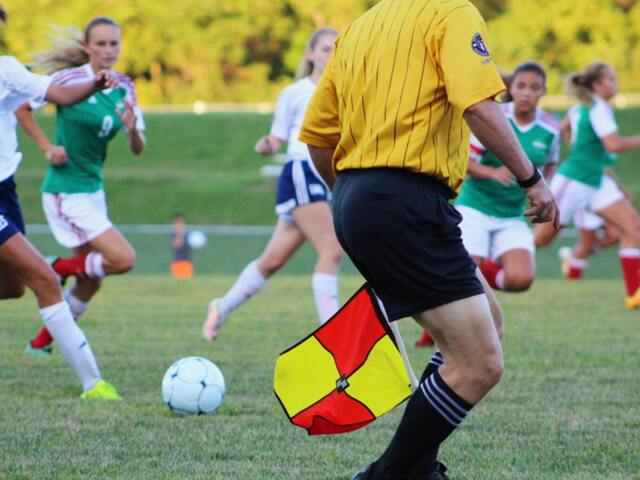However, following the introduction of Gianni Infantino as new FIFA president and several trials, VAR has become a staple in football as we know it today. Most recently, VAR has been present at the Euro 2020 tournament. At the time of writing, after all quarterfinal games have been played, VAR has been used to overturn 18 decisions. ESPN has rated each decision on a scale of 1 to 10, with the average decision scoring 8.33/10, proving, arguably, that the technology has been a success in the tournament so far.
But what is VAR actually? As the name suggests, the “video assistant referee” is comprised of a team that review video footage to ensure that the referee has not made an incorrect call. The videos are recorded using Sony’s patented Hawk-Eye technology. Hawk-Eye was originally developed in the United Kingdom in 2001. The technology was developed for television purposes to show the trajectory of a ball. It was later accepted by the governing bodies in cricket in 2009 to allow an umpire's decision to be reviewed.
Hawk-Eye was first introduced in football as goal-line technology, used to establish if the ball had crossed the goal line. Hawk-Eye has advanced since those days to also assist with offside decisions, disciplinary decisions, and even incidents of mistaken identity where the wrong player may have been reprimanded for an offence.
VAR is comprised of a system of cameras using tracking technology. These cameras work together to track the play creating videos that can be used for later review if needed. Should a video need to be reviewed, an assistant referee in the video operation room will examine the footage to decide if the referee’s decision should be overturned.
But VAR doesn’t come without its fair share of controversy. Many fans believe that VAR affects the flow of the game. But aside from the impact on the game, VAR technology comes at a hefty price. In 2018, VAR technology used in the Brazilian top division cost an estimated £4.5m. However, FIFA has begun to explore the option of introducing “VAR-Lite”, a lower-cost alternative to the current VAR model into the English Football League making it more accessible to teams in lower divisions with smaller revenue.
In the world of modern technology, many people are already beginning to be replaced by machines. DHL invested over £200m to replace factory workers with robotics, ride-sharing app, UBER, has begun testing driverless cars, and Amazon acquired Kiva Robotics for a breath-taking £587m as an investment to replace humans with machines.
With a strong campaign in research and development of new VAR technologies and advancements, could we be looking at the beginning of the end for the human football referee?


